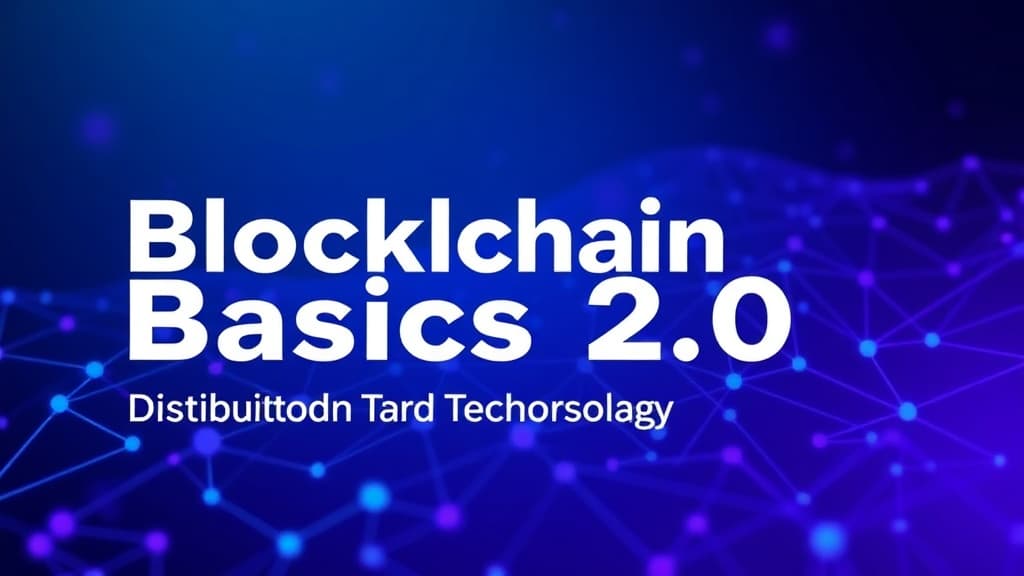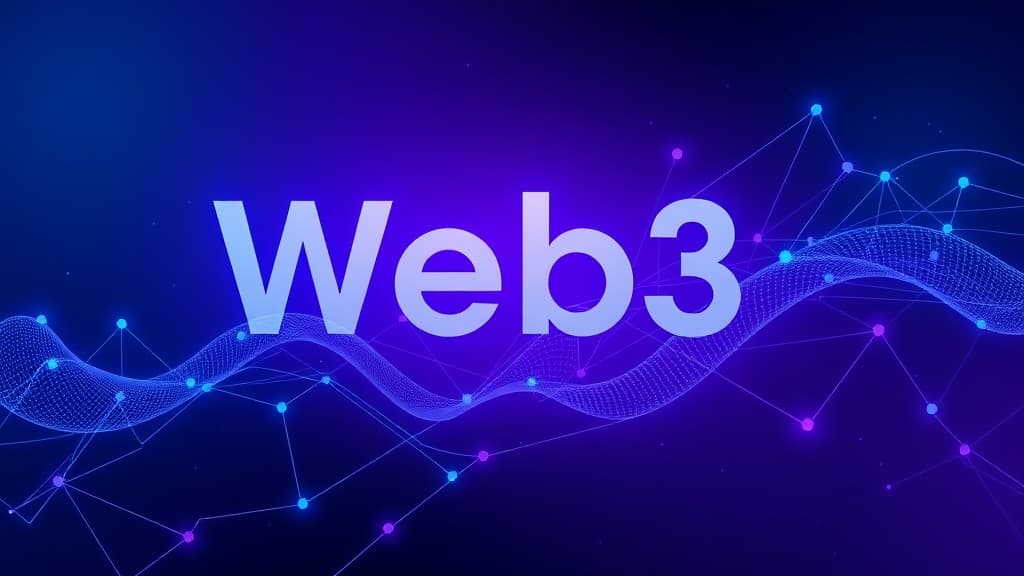Blockchain Unchained: The Future of Digital Transactions

Blockchain Unchained: The Future of Digital Transactions - Technology analysis and insights
Blockchain is transforming how we think about digital transactions. From its decentralized nature to its growing impact on industries, discover the key trends and future possibilities of this revolutionary technology.
Unlocking the Power of Blockchain
Imagine a world where transactions happen seamlessly, without the need for middlemen, and trust is built directly into the technology itself. That's the promise of blockchain. Since its inception with Bitcoin in 2009, blockchain has evolved from a digital currency solution to a transformative technology with applications across various sectors. Today, we'll explore what makes blockchain tick, the current trends shaping its future, and why it’s not just a buzzword anymore.What Is Blockchain?
At its core, blockchain is a decentralized, distributed ledger technology. Picture it as a digital notebook that multiple users can access but no single person can erase. Each page (or block) in this notebook contains a record of transactions that are securely linked to the previous pages, making it nearly impossible to tamper with the information. This structure ensures transparency and security, which are vital for trust in digital transactions.The Consensus Mechanisms
One of the key components of blockchain is its consensus mechanisms. They’re the rules that help validate transactions and secure the network. As of October 2025, we’ve seen an interesting shift: - Proof of Work (PoW): This was the original method used by Bitcoin and is known for its energy-intensive mining process. While it’s secure, it’s not the most efficient model. - Proof of Stake (PoS): This mechanism has gained traction, especially after Ethereum’s transition to a PoS model in 2022. It’s far more energy-efficient, allowing validators to create new blocks based on the number of coins they hold and are willing to “stake” (or lock up). - Delegated Proof of Stake (DPoS): A more democratic approach where stakeholders vote for delegates to validate transactions, thus speeding up the process.Recent Trends in Blockchain
Let’s dive into the trends that are pushing blockchain into the spotlight:Layer 2 Solutions
If you’ve ever tried to use Ethereum during peak hours, you know how frustrating high gas fees can be. That’s where Layer 2 solutions come into play. Technologies like Optimistic Rollups and zk-Rollups are designed to enhance scalability. Since Ethereum's shift to these solutions, transaction throughput has soared, making the network more efficient and affordable. No one wants to pay a fortune just to send some Ether!Interoperability
Ever wonder why we can’t seamlessly transfer data between different blockchains? That’s changing. Projects like Polkadot and Cosmos are leading the charge in blockchain interoperability. They allow different networks to talk to each other, making it easier for developers to create applications that can utilize multiple blockchains at once.Central Bank Digital Currencies (CBDCs)
Countries are waking up to the potential of blockchain in monetary systems. As of 2025, nations like China and members of the European Union are actively piloting their Central Bank Digital Currencies. These CBDCs aim to enhance transaction efficiency, reduce costs, and offer a digital alternative to cash—potentially revolutionizing the way we think about money.Green Blockchain Initiatives
With climate change being a major concern, the blockchain community is stepping up. Ethereum’s merge to PoS reduced its energy consumption by an astonishing 99.95% compared to its PoW model. Many blockchain projects are now focusing on sustainability, ensuring that the technology that powers our transactions doesn't come at the cost of our planet.The Numbers Behind the Buzz
Let’s talk numbers, because they tell a compelling story: - The global blockchain technology market is projected to exceed $163 billion by 2027, growing at a staggering CAGR of 67.3%. - A recent Deloitte survey revealed that 81% of enterprises are planning to incorporate blockchain into their operations, up from 73% in 2024. Just imagine how that will shape industries! - When it comes to energy consumption, post-merge, Ethereum operates on roughly 0.01 TWh annually, compared to Bitcoin’s whopping 130 TWh. The contrast is stark and highlights the potential for blockchain to go green.Real-World Applications of Blockchain
Let’s look at some inspiring case studies where blockchain has made waves:1. Healthcare: Blockchain is proving invaluable in patient data management. By providing a secure way to store and share medical records, healthcare providers can access accurate information quickly, improving patient outcomes. 2. Supply Chain: Companies like IBM and Walmart are using blockchain to track the journey of products from farm to table. This transparency builds trust, reduces fraud, and enhances food safety. 3. Entertainment: Musicians are using blockchain to bypass traditional distribution channels, ensuring they receive fair compensation for their work. Platforms like Audius allow artists to share their music directly with fans.
The Impact on Traditional Banking
Blockchain isn’t just transforming tech; it’s shaking up the banking industry too. Here’s how: - Remittances: Sending money across borders has never been easier or cheaper. Blockchain enables near-instant transactions without the hefty fees that traditional banks charge. - Loan Processing: Smart contracts can automate the loan approval process, speeding it up and reducing the need for paperwork. - Decentralized Finance (DeFi): The rise of DeFi platforms is providing alternatives to traditional banking services, allowing users to lend, borrow, and trade without intermediaries.What’s Next for Blockchain?
Looking ahead, we can expect some exciting developments: - Quantum Computing: As this technology advances, it’ll challenge current cryptographic methods that secure blockchain transactions. The industry will need to adapt quickly to ensure security. - AI Integration: Imagine blockchains that can learn and adapt based on real-time data inputs. This could revolutionize how we interact with digital assets and smart contracts.Regulatory Landscape
As blockchain matures, so too does the regulatory framework. Different countries are taking varied approaches to regulation, from embracing innovation to imposing restrictions. As of 2025, we see a growing consensus on the need for balanced regulations that protect consumers while encouraging innovation.Conclusion
Blockchain technology is far more than just a trend; it’s a revolution that’s reshaping our world. With its ability to enhance transparency, security, and efficiency, the possibilities are endless. As we witness its continued evolution, it’s clear that blockchain is not just unchaining our transactions; it’s unlocking a future full of potential and opportunity. So, whether you’re a tech enthusiast, an investor, or just curious, it’s time to embrace and understand this remarkable technology. The future is bright, and blockchain is leading the way!Educational Content Only — Not Financial Advice
This article provides educational information only and does not constitute financial, investment, trading, or legal advice. Cryptocurrency investments carry significant risk, including the potential loss of principal. Always conduct your own research and consult with licensed financial professionals before making investment decisions. Past performance does not guarantee future results. CryptoLumos and its authors assume no liability for financial decisions made based on this content.
Related Articles
Continue exploring more insights

Blockchain Basics 2.0: Unpacking the Evolution of Distributed Ledger Technology
Explore the exciting evolution of blockchain technology, from its core components to the latest trends that are shaping its future. Discover how it's revolutionizing industries and address key elements like interoperability, sustainability, and regulation.

Decentralization Reimagined: The Future of Autonomous Economies in Web3
As we stand in October 2025, Web3 isn't just a buzzword; it's a thriving ecosystem that's already changing lives. From DAOs to interoperability, let's explore how decentralization is reshaping our digital future.

Web3 in 2025: How Decentralization is Reshaping Our World
Web3 is no longer just a buzzword; it's a reality that's reshaping industries and empowering individuals. Discover how decentralized technologies are changing our world in 2025.
Image Gallery

Comments
Share your thoughts and join the discussion
Leave a Comment
No comments yet
Be the first to share your thoughts!